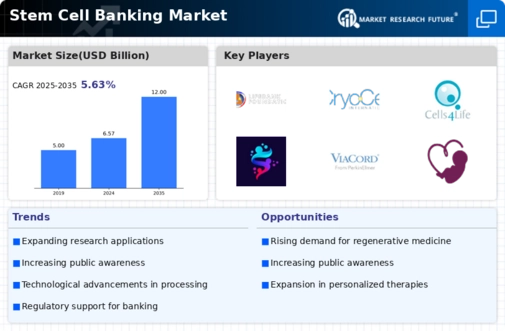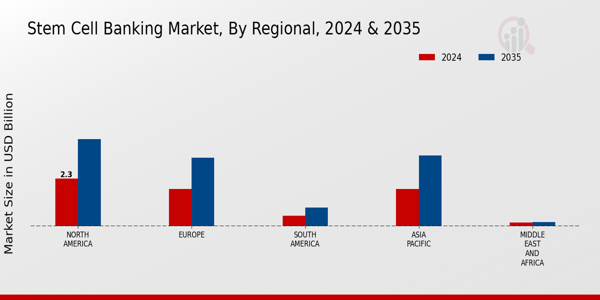Market Trends
Key Emerging Trends in the Stem Cell Banking Market
Recent years have seen transformational changes in stem cell banking industry caused by milestones achieved through regenerative medicine procedures, heightened realization about curative abilities found in these cells as well as increasing demand for customized treatment services provided under personalized healthcare models. Notably, one trend is represented by private personal use oriented banks based on stem cells established over time; this category includes cryobanks that store umbilical cords or other tissues from newborns). Expecting mothers are increasingly storing their baby’s cord blood hence preserving a valuable source of tissue that may be used later on in regenerative therapies.
A trend exists in the market towards the use of cord blood stem cells as therapeutics. In addition to customary hematopoietic stem cell transplantation (HSCT), cord blood stem cells are being studied as treatments for multiple neurological disorders, metabolic diseases and autoimmune diseases. This trend indicates that umbilical cord blood can be utilized in broader applications and is being increasingly recognized as possessing regenerative potential making it part of personalized medicine.
Stem cell separation and processing technologies have advanced greatly over time. For example development of automated systems and closed processing systems which enhance sterility plus effectiveness during tissue banking are underway. Such trend is consistent with growing shift towards standardization/quality control when it comes to dealing with stem cells thereby ensuring their viability/potency is preserved.
In terms of overcoming challenges that were experienced historically with stem cell cryopreservation, novel techniques such as vitrification have been developed which offer better cell survival rates and post-thaw functionality. This trend implies a focus on optimizing the storage conditions of stem cells for long term purposes so that they can remain viable and therapeutically useful over extended periods.
Additionally, there is a growing application of stem cells in regenerative medicine and cell-based therapies which influences the market. With progress made in stem cell research, new treatment methods have been devised for diseases like musculoskeletal disorders, cardiovascular diseases and neurodegenerative disorders.This trend shows how stem cell banking has evolved to become an option for personalized regenerative therapies; thereby contributing towards advancement in medical interventions. Collaborations between stem cell banks, research institutions and healthcare providers are playing a major role in enhancing stem cell banking as well as its applications. Research consortiums, joint clinical trials as well as data sharing all help comprehend broad aspects of stem cells biology while developing safe and efficient therapies based on them. The cooperation indicates how interdisciplinary studies on nerve cells may affect health care industry. Moreover, attention is being focused on ethical as well as regulatory issues touching on stem cell banking. As much as this field continues to evolve it requires clear guidelines and ethical standards concerning collection, processing, and use of these cells. This trend demonstrates commitment to responsible transparent practices within this field thus ensuring ethical use of the cells for therapeutic reasons.











Leave a Comment